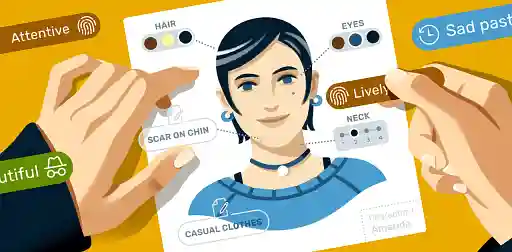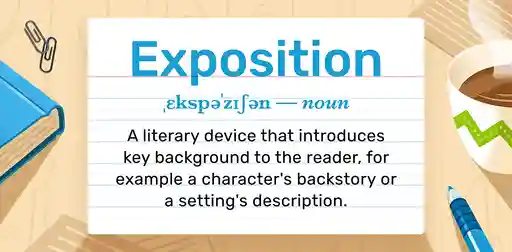Last updated on Feb 03, 2023
Worldbuilding: Create Brave New Worlds [+Template]
About the author
Reedsy's editorial team is a diverse group of industry experts devoted to helping authors write and publish beautiful books.
More about the Reedsy Editorial Team →Martin Cavannagh
Head of Content at Reedsy, Martin has spent over eight years helping writers turn their ambitions into reality. As a voice in the indie publishing space, he has written for a number of outlets and spoken at conferences, including the 2024 Writers Summit at the London Book Fair.
View profile →Worldbuilding is the process of creating a fictional world's history, geography, politics, culture, and social structures. Because it's fundamental stage in the writing process, particularly for genres like fantasy and science fiction, authors are recommended to approach it as if the world itself as a character. They can do so a few different ways: inductively, or building a world around a story, or deductively, building a story within a world.
Since creating a fictional universe is a daunting task, you might want a bit of help. Here's how to worldbuild in 7 steps:
We’ve also created a template to help you in your process, which you can download for free.

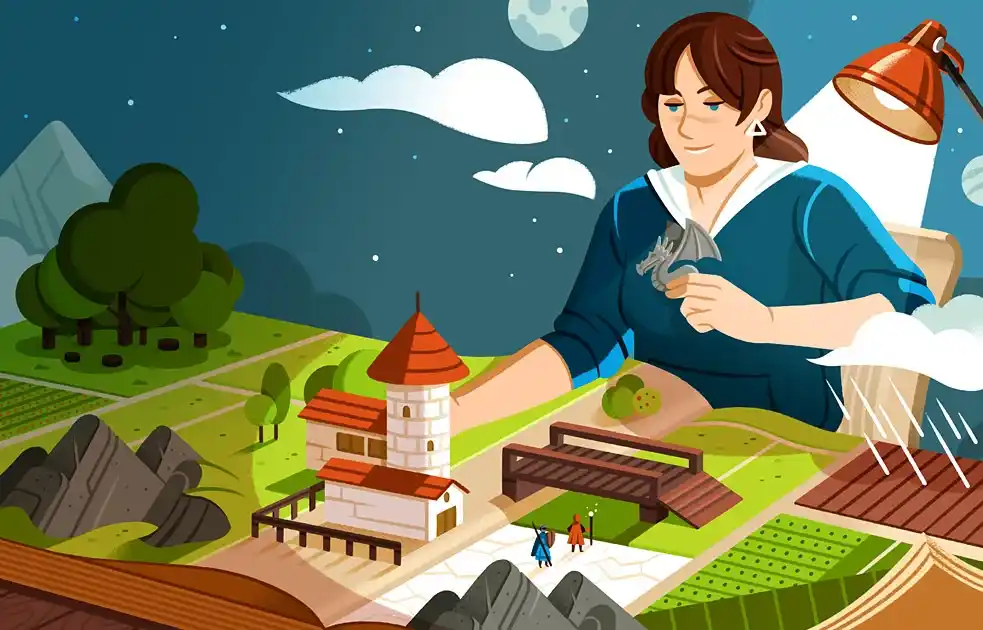
FREE RESOURCE
The Ultimate Worldbuilding Template
130 questions to help create a world readers want to visit again and again.
1. Define your world’s name and setting
Broadly speaking, the setting of your story will either be our own world, or an entirely fictional world — what’s known as “second world” fantasy. Before you start work on your backstory, it’s essential to know which of these categories your story will fall under.
Create second worlds from scratch
George R.R. Martin’s A Song of Ice and Fire and Raymond E. Feist’s Riftwar cycle are classic examples of “second world” fantasy: they were able to create worlds untethered by historical paths or laws, which gave them a lot of freedom of choice.
This creative freedom is exciting, but it also requires a lot of world building work to invent a fleshed out and textured fantasy world. A strong starting point in order to define your world as “other” to our own is selecting your world’s name. You can make it as cool as you like; think Discworld, Middle Earth, Zamonia, etc.
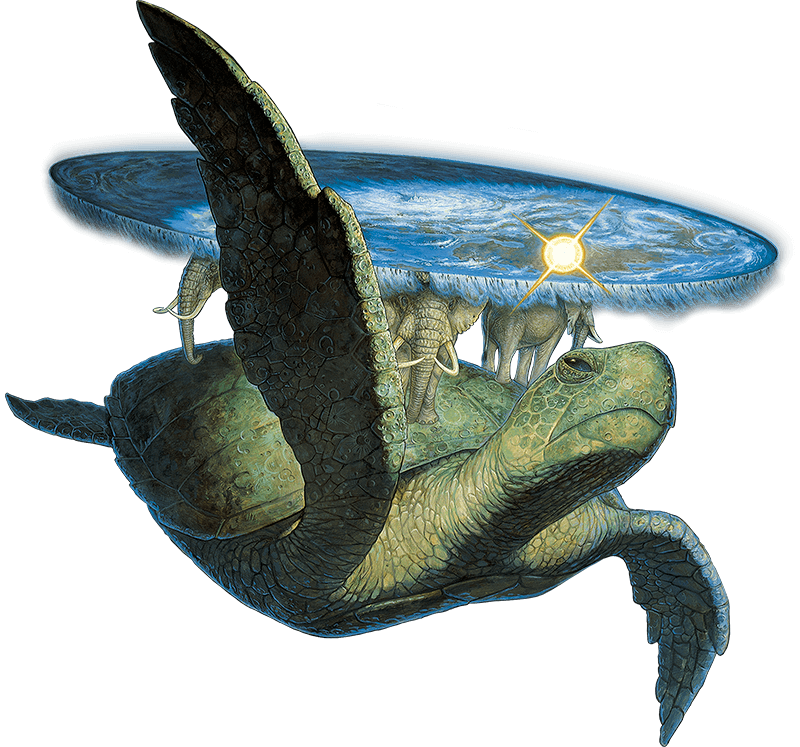
Set your story in an Earth-like place
Not all fantasy writers, however, wish to create an entirely new world. You can always set your story right here on Earth. For example, the vast majority of literary fiction, mystery, and romance novels are set on a place called Earth that bears a striking resemblance to our own world. This kind of world creation may require less invention on behalf of the author, but may require just as much preparation as they are constrained by historical specifics, technology, and politics.
Within “real world” fantasy, however, you will see two broad subgenres: alternate history fantasy, and historical fantasy.
For historical fantasies, while some amount of historical license is accepted (and encouraged), your readers will notice something’s wrong if your book has Atilla the Hun kidnapping Florence Nightingale without the help of a time machine.
Alternate history fantasy gives you a little more freedom; as the name suggests, you’re inventing an alternate version of history. Still, you’ll want to think carefully about the changes you’re making, and the way they might impact the day-to-day life of your characters.
Once you’ve selected between first and second world settings, you can begin building it in earnest. This is where the fun really begins.
Watch: How to create your worldbuilding bible
2. Create a map of the territory
Once you’ve named your world, it’s time to fill it. That means having at least a broad sense of its geography and ecology, so that you know what the landscape looks like, and what beasts your characters are likely to encounter.
You can consult our worldbuilding guide for a full list of prompts, but some questions to consider include:
- What sort of environment can be found in different areas of your world? (Deserts, oceans, mountains, forests, etc)
- What wildlife can be found there?
- What is the climate like?
- Where are the cities? How large are they? What are they called?
Take inspiration from real countries
You can draw from the real world when imagining these aspects of your fantasy world. For example, Leigh Bardugo’s Grishaverse takes inspiration from the geography of a number of real-world countries, often at another point in their national history. You can find analogs for Tsarist Russia, the Dutch Republic, China, and Scandinavia in Bardugo’s books.
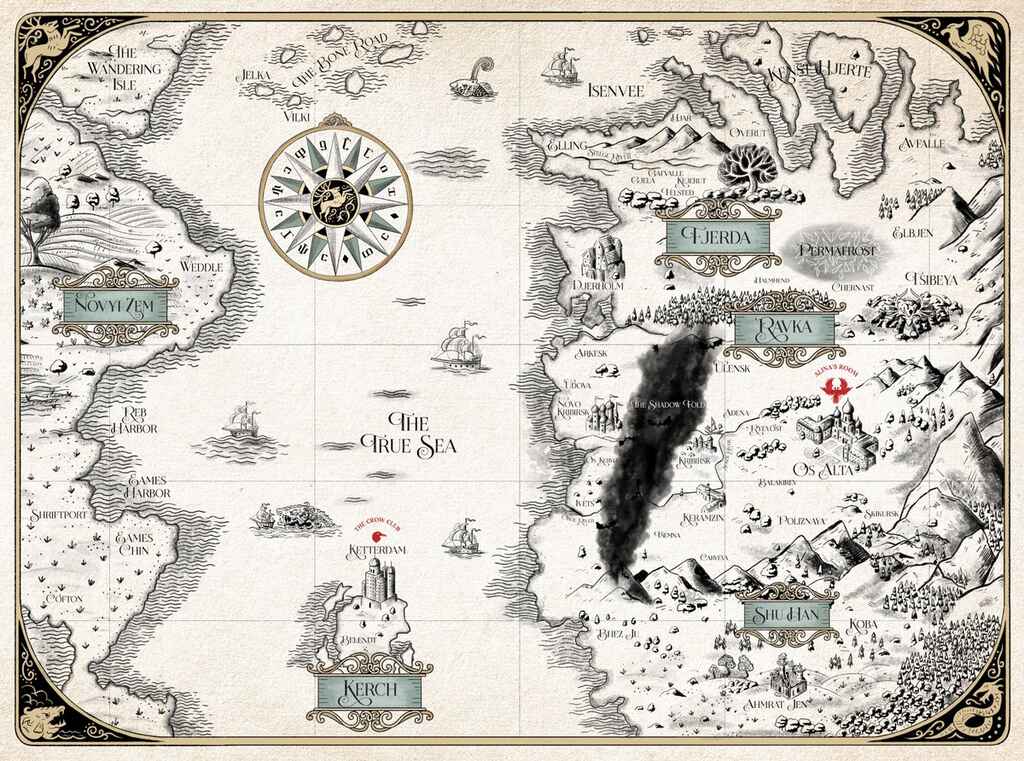
As well as drawing from the past, another approach could be to imagine a future iteration of our world. NK Jemisin’s Broken Earth trilogy is a masterful example of speculative worldbuilding. The trilogy takes place on a supercontinent called the Stillness, which is wracked by massive climate events every few centuries which reshape the entire world’s geography. Colson Whitehead’s Zone One is set in the familiar but decimated remains of a future New York, a cityscape that has been devastated by a zombie apocalypse.
Maybe set your story in two different places
Another possibility is to create a dual setting, locating your narrative in part in our own physical world, and in part in another. Erin Morgensen’s The Starless Sea tackles this expertly, using the classic “magical door” trope to connect her real-world locations (Vermont and New York) with her fantastical world, the honey-filled Starless Sea and the magical harbors that sit upon it.
Imagine an entirely new environment
You may, of course, wish to create a landscape entirely alien from our own. Frank Herbert’s Dune is set on the desert planet of Arrakis, a world entirely devoid of natural water and inhospitable to most forms of life. Noteworthy exceptions to this are sandworms, giant and dangerous worm-like creatures that Fremen, the planet’s inhabitants, have learned to ride.
Lots of fantasy readers like referring to a physical map when imagining a world that is unlike our own. Maps are not always necessary, but they’re a useful foundation to define a sense of distance and space — and they can help you visualize your world as you’re building it.
Draw a map to help the reader
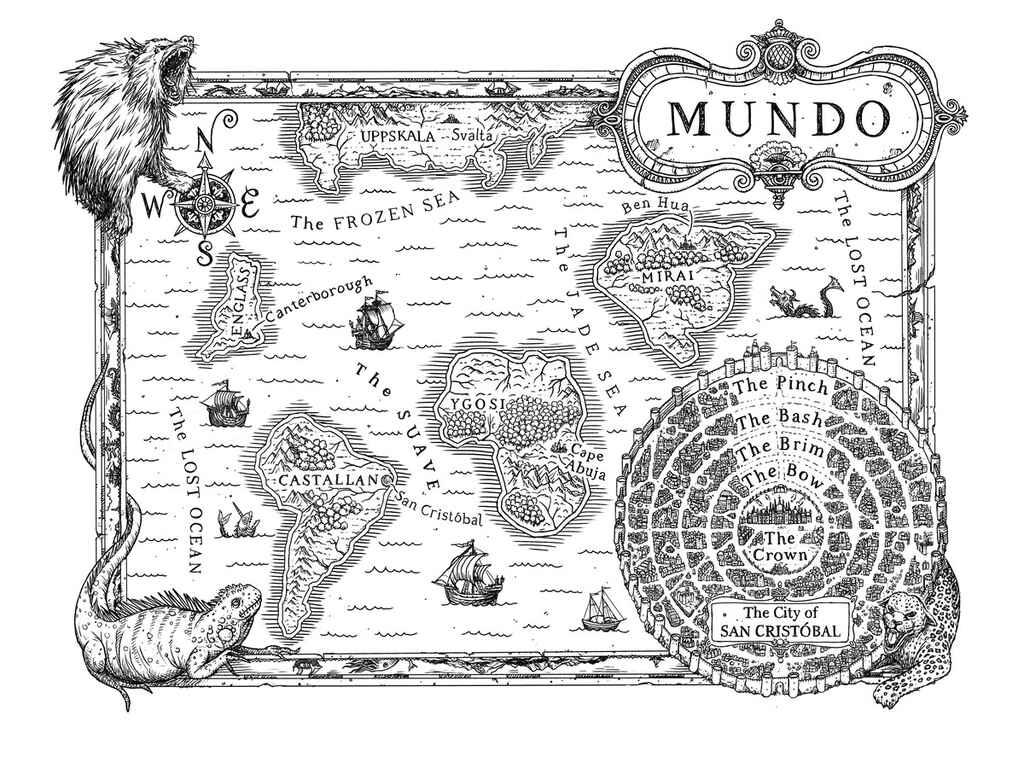
For a personal and expert approach, it's definitely worth hiring a professional illustrator to develop your fantasy map. Here at Reedsy, we have rigorously curated the best freelance illustrators in the publishing business — and they're just a click away from helping your work stand out.
🐲 Get your world right by hiring a pro fantasy editor
Dan H.
Available to hire
Professional editor of SFF/Horror. Have worked with bestselling authors Shauna Lawless, Gemma Amor, Stacey McEwan. (New to Reedsy - Sept 24)
T.S. F.
Available to hire
A NYT bestselling and award-winning editor of children's and YA/teen fiction with 16 years of experience at Top 5 publishing imprints.
Daniel M.
Available to hire
I am a freelance developmental editor and manuscript assessor with more than 25 years experience in fiction and narrative nonfiction.
3. Populate the world with people
Now that your physical landscape exists, let’s drop some people into it. To create a textured and believable setting, you’ll want to populate your planet with a variety of races and cultures — which can be either created, or based on real-world cultures.
You may wish to pull species from the rich traditions of high fantasy (elves, dwarves, trolls, etc), but you can also invent entirely new races. Our worldbuilding template will help you nail down the details of your inhabitants.
Be careful with tropes and stereotypes
Make sure to research thoroughly before settling on any attributes or characteristics for your characters. Even in the imagined worlds of fantasy and science fiction, harmful stereotypes can be perpetuated, especially when drawing on real-world cultures.

Some research is therefore required to ensure you are handling your source material in a respectful way, and to avoid retrograde stereotypes when portraying the characteristics of imagined races (including “classic” fantasy characters like dwarves, which have long been influenced by antisemitic tropes).
An example of real-world cultures informing fantasy cultures is the setting and characters of Children of Blood and Bone. Author Tomi Adeyemi draws on African mythology and her own Yoruba heritage, setting the story in a fictional version of pre-colonial Nigeria. Her imagined country, Orïsha, is inhabited by two peoples; the magical divîners with distinctive white hair, and their non-magical oppressors, the kosidán.

FREE COURSE
How to Develop Characters
In 10 days, learn to develop complex characters readers will love.
Invent an alien species
Of course, your characters don't need to be human. Octavia Butler’s Xenogensis series is an example of an invented non-human race. In the series’ first installment, Dawn, a human woman Lilith awakens alone in a prison cell, only to learn that she is one of the last survivors of the human race. She has been abducted by the Oankali, a humanoid but thoroughly alien three-gendered species covered in sensory tentacles. The differences between the humans and the Oankali, and the Oankali’s unusual biology and reproduction, form the driving force behind the novel’s plot.
Come up with a new slang or language
When we talk about invented languages in fiction, most of us might imagine devotees of Tolkien whispering Elvish love poems — or Star Trek fans barking threats in Klingon. But language is something that applies to books across the board. Your decisions here will affect how the story develops and can make the difference in whether your book is believable.
Languages can be an interesting and exciting avenue of worldbuilding. The spoken word is a reflection of the cultures that spawned them, and the evolution of the language will often indicate some societal change.
For example, the youths in Anthony Burgess’ 1962 novel A Clockwork Orange speak a dialect called “Nadsat” which mixes Russian and English words. That choice alone implies a lot about the dystopian world of the book, suggesting a future where Soviet culture had spread further West.

Our worldbuilding guide will help you develop your ideas about language, but as a start, it's worth considering how many languages are spoken in your world, which language is most prevalent, and any common phrases or greetings which might come up a lot.
If your story is set on Earth, you can play with idioms and slang to create a unique dialect for your characters, that sets your fictional world apart from our own. Writers of historical fiction will also want to pay close attention to dialect, to ensure that any vocabulary being used is authentic.
So while language building isn’t essential, any little details like these that you can add to your worldbuilding will help create a richer and more immersive setting for your story.
4. Elaborate your civilization’s history
Civilizations are defined by their history. That might be a very broad statement — but it contains a kernel of truth. Writers should have a solid grasp on the history of their world, regardless of genre, and should be familiar with the key events that matter to the story they’re telling or the culture they’re exploring. So, how can you go about this?
Once again, a popular way to flesh out the history of your world is to borrow from our own. The line between historical fiction and fantasy is somewhat blurred, and with good reason. A good fantasy world will have a history that’s every bit as interesting as the one we have here on Earth Prime, so why not draw inspiration from it?
Going back to A Song of Ice and Fire, Martin famously patterned his book's central conflict after The War of the Roses. Using a veiled version of English history as his starting point, Martin then fills in the rest of his rich history with dragons, mad kings, and ice zombies. Similarly, RF Kuang’s The Poppy War is a fantastical reinterpretation of 20th-century China, and contains a fantasy drug-driven conflict inspired by the real-world Opium wars.
Speculate on history-altering moments
Let’s say you’re dealing with a futuristic version of our reality: there’s still plenty of work to be done. You need to have some idea of what’s happened between now and the time when you set your book. Start by speculating on developments in technology and society. Then, crucially, figure out how these changes have affected the characters and cultures in your book.
If your book is an “alternate history,” it may stem from a single “what if” question. Think of a single point of divergence: a moment in history that shifted ever-so-slightly, leading to changes that ripple forward through time.
In Philip K. Dick’s The Man in the High Castle, the point of divergence comes with the assassination of President Franklin Roosevelt in the early 1930s. It results in a continuation of the Great Depression and American isolationism, allowing Germany and Japan to win World War II. The book then answers the question: “What would 1960s America be like if the Allies lost the war?”
5. Create systems of technology and magic
Perhaps the defining feature of any SFF book is its systems, whether they be magical or technological. It’s important to consider the details of how these things work carefully; just waving your hand and saying “and there’s magic” won’t cut it. You’ll have to define the magical or supernatural elements of your world.
With both science fiction and fantasy worldbuilding, you’re likely to come across the phrases “hard” and “soft” frequently. These labels are a (somewhat arbitrary, but still helpful) way of distinguishing between different types of SFF. Let’s take a look further, so you can decide where your world falls on the spectrum.
Spell out the rules of hard magic
A hard magic system is one defined by its rules, and which has clear and explicit boundaries on when said magic does and doesn’t work, and what the consequences of using magic are.
A great example of this type of magic system is Brandon Sanderson’s Mistborn series, set in a world where the primary form of magic is allomancy: a system whereby users swallow different metals, and metabolize them to different effects. Dedicated fans have been able to catalog all the possible variations of allomancy, and have discovered a clear cause-and-effect relationship between the actions of allomancers and their consequences, making for a true hard magic system.
As you can imagine, designing a hard magical system is a pretty significant undertaking that may involve a lot of variables. For that reason, it’s often worth dedicating a good chunk of your worldbuilding time to making sure your system is watertight.
Play with mystery and soft magic
You can choose not to explain how magic works and allow it to retain some of its mystery. After all, as soon as you explain all of magic’s secrets, it almost ceases to be magic.

One example of a “soft” magic system, one which doesn’t have hard and fast rules, is the one in Belgariad. The sorcerers in David Eddings’ Belgariad manifest their willpower through a system he calls ‘The Will and the Word’. It doesn’t require any potions or scrolls, and the so-called “rules” are able to be broken. As such, the limits to magical powers in this world are more conceptual than they are practical, and you’d be hard pressed to describe exactly what can and can’t be done.
While the flexibility of a soft magic system may be appealing — after all, you can’t break a rule if you haven’t established it — it certainly isn’t a get-out-of-jail free card. If you have an ‘anything goes’ approach to magic, your characters’ actions may cease to have consequences: you can bring anyone back from the dead, time can be reversed, your hero can escape from danger just by ‘magic.’ Be sparing with your use of soft magic, and don’t use it as a deus ex machina that miraculously solves your plot issues.
Explain how magic impacts the world
As well as defining the rules of your magic system, consider what it means to have magic. What are the consequences on both your world and the people using it? Maybe it takes a physical toll on the user, or perhaps there are emotional, mental, or social implications to exercising magic.
Who can use magic? If your protagonist is the only person with their gift, how does the world around them react to it? Are they revered or reviled for their abilities?
Conversely, what happens if someone who should have powers, doesn’t? For example, in Codex Alera by Jim Butcher, the people of Alera bond in childhood with one or more "furies" — elementals of air, water, fire, earth, wood, or metal. Everyone, save the protagonist Tavi who happens to be the crown prince of Alera. This lack of bond comes to have major consequences as noblemen around him begin to eye his ultra-powerful father’s throne.

If, as in Codex Alera, magic is widespread, how do people learn how to use it? Trudi Canavan’s Black Magician trilogy has a Magician’s Guild, where people work their way up through a structured hierarchy. Wizards in Harry Potter attend boarding school and end up with soul-crushing jobs in magical middle management. By imagining how magic would function practically in your world, your book will become all the more believable and relatable.
Now that we’ve discussed magical systems, it’s time to turn our attention to science…
Be precise if you use hard science
This is a brand of writing with a particular basis in technological fact. Best known for his work on 2001: A Space Odyssey, Arthur C. Clarke is one of the greatest pioneers in this field, whose fictional inventions bear close resemblance to everyday items in the 21st century.
One great contemporary example of the hard science is Liu Cixin’s The Three-Body Problem, a novel which explores a real-life phenomenon in orbital mechanics, and imagines a three-star system containing a single Earth-like planet which experiences extreme destruction as it passes between the three.
The important point is this: if you choose to write about technical science and technology, you should get your facts right. Many fans of the genre will likely know more about science than you do. If you get the details wrong, they will call you out on it; take, for example, Larry Niven, who was mercilessly teased by readers for having a character in Ringworld teleport eastward around the Earth to extend his birthday, when doing so would have actually shortened it.
You can always seek advice: the internet is a wellspring of information. If you’re shy about contacting people, Wikipedia is not a terrible place to start your research.
..or give yourself some slack with soft science
We know what you may be thinking — “Dammit, Reedsy, I’m a writer not a physicist!” If you’re not exactly science-minded but still want to write in the genre, you can always take the lead from writers like the late Iain M. Banks. His beloved science fiction novels are about The Culture, a post-scarcity society where all work is automated, and the citizens leave all the big decisions to a benevolent A.I.

Banks’ universe is full of science fiction tropes like droids and spaceships — but he doesn’t really explain how any of it works. It makes perfect sense from a storytelling point of view: novels set in the modern day rarely explain how iPads work. To us, they’re simply a function of everyday living. Banks makes a conscious decision to focus on character and story and he proves that you don’t need to know much science to write great science fiction.
Whether you go hard or soft, it’s important to establish your system ahead of time, so that you can remain consistent and logical throughout your work. Knowing how involved you want your systems to be will also mean you can plan how and when to deploy your exposition to maximum effect.
6. Distribute resources with a working economy
It may not sound too exciting, but considering something as fundamental as the economics of your world can be extremely helpful in making it a believable one. This isn't essential, but having an understanding of the economy can help you imagine how your characters will move through the world.
Take, for example, Anne McCaffrey’s iconic fantasy series, Pern. While the dragons are probably what most readers come away remembering, those who play close attention to the mechanics of the world are rewarded with a fascinating system to wrap their heads around. In Pern, the wooden tokens (“marks”) used for trade hold no intrinsic value – they don’t correspond to, for instance, a measure of precious metal, but are simply worth what they are traded for. So, your mark may be more or less valuable, depending on simply how well you are able to haggle to trade it.
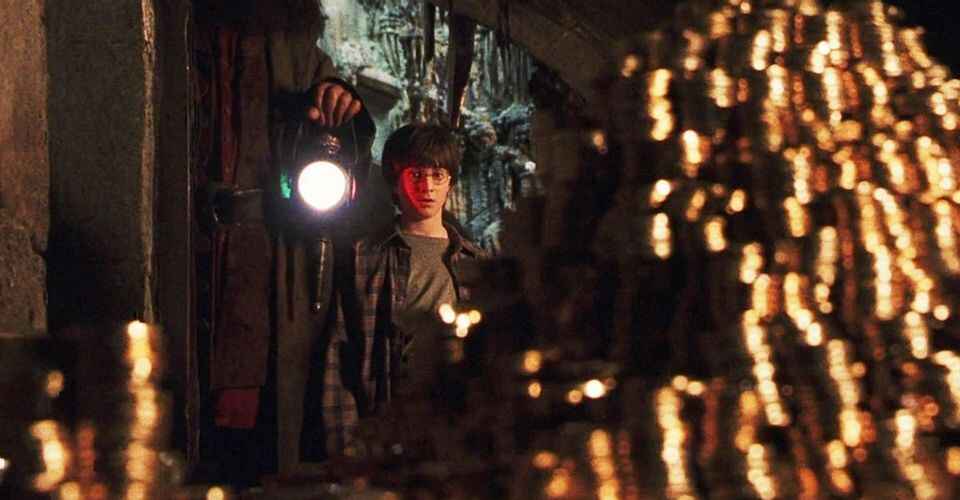
Your economy may also be a speculative one, like the post-scarcity economy in Iain Banks’ Culture series. The series explores the implications of a world where most goods can be produced abundantly with minimal or no human labor, something Banks describes as “space socialism”.
As a minimum, it’s good to consider what the main valuables are in your world, how trade takes place (is it a barter system? Do people trade with money?), what the currency is called if there is one, and where your heroes come in the financial pecking order.
7. Determine your world’s power structure
As well as creating the history and economy of your world, you may also want to consider other institutions and power structures, such as religions, governments, or political ideologies. Again, this might be drawn from reality: Philip Pullman’s His Dark Materials series features a society dominated by the Magisterium, a religious body modeled in part on the real-world Catholic church.
You might also want to borrow from the past, like the feudal system of Dune, or extrapolate into the future, like the theocratic, totalitarian state of Gilead in Margaret Atwood’s The Handmaid’s Tale.
It’s worth reminding ourselves that stories set in other worlds have always actually been about the world we live in. Some of the most enduring works of science fiction and fantasy are profound commentaries on human culture and, in particular, our relationship to power and powerlessness. So even if your story takes place in a galaxy far far away, always remember to ask yourself what are you trying to say about society or the human condition and try your best to be intentional with how you use real-life source materials.
And with that final point, it’s now over to you: remember to download our free worldbuilding guide for tips on how to create your own fantastic lands and customs. We can’t wait to see your brave new world. Qapla'!*
*Klingon for “good luck”






